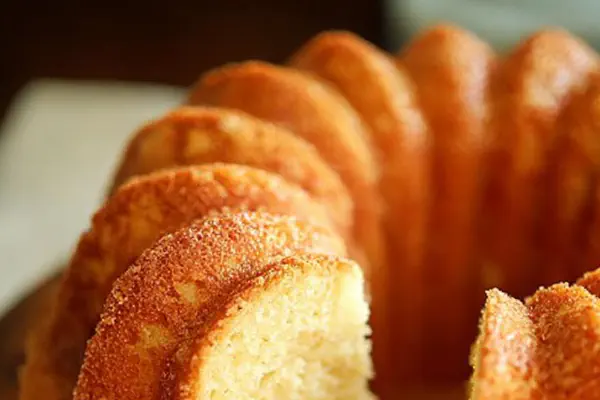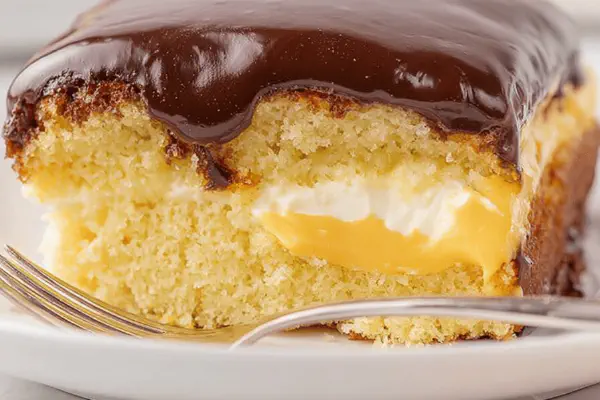Tangy Buttermilk Pound Cake

By Emma
Certified Culinary Professional
Ingredients
- 1 3/4 cups all-purpose flour
- 1 3/4 cups cake flour
- 1/2 teaspoon fine sea salt
- 3/4 teaspoon baking soda
- 1 cup unsalted butter softened
- 1 1/4 cups granulated sugar
- 4 large eggs room temperature
- 1 cup buttermilk room temperature
- 1 teaspoon vanilla extract
- 1 teaspoon fresh lemon extract
- Optional twist Add 1 teaspoon finely grated lemon zest for brightness
About the ingredients
Method
- Preheat oven to 320F. Grease and flour a 10 to 12-cup bundt pan. Dust excess flour out.
- Using an electric mixer, beat butter and sugar on medium-high until pale and fluffy, about 6–7 minutes. You want pale yellow, not grainy sugar lumps settling.
- Add eggs one by one. After each egg, mix just enough to blend – don't overbeat or batter breaks down. Scrape sides of bowl so no streaks of unincorporated egg remain.
- In a mixing bowl whisk sifted flours, salt, and baking soda thoroughly. This keeps leavening even.
- Add dry flour mix and buttermilk alternately to the butter mixture, starting with a third of dry, then half the buttermilk, another third dry, remaining buttermilk, last dry. Fold gently but fully incorporate after each addition. Too much mixing kills volume, too little leaves lumps.
- Mix lemon and vanilla extracts with grated lemon zest if using. Add to batter last, folding just to combine for fresh brightness lifting the deep fatty notes.
- Pour batter evenly into prepared bundt pan. Tap pan sharply on counter a few times – cracks the air bubbles, rising evenly. Smooth top with spatula, no roller needed.
- Bake on lower middle rack 1 hour 5 to 1 hour 10 minutes. Bake until edges golden and a toothpick poked in center jiggles moist crumbs, no wet batter. Oven temps vary; check early. Listen for soft crackle of crust forming.
- Cool in pan 10 minutes. Loosen edges with butter knife gently, invert onto cooling rack or plate. If sticking, don't force; cool longer or warm pan bottom briefly over flame reversed.
- Cool completely before slicing. Store wrapped on counter up to 3 days or refrigerate for a week. Moisture redistributes, texture mellows overnight – better next day.
Cooking tips
Chef's notes
- 💡 Cream butter and sugar patiently until pale and fluffy; traps air bubbles needed for rise. Skip rushing or lumps stay. Butter softened not melted is key. Cold eggs cause clumps so warm ahead. Fold dry ingredients and buttermilk alternately to keep batter airy but avoid overmixing. Too fast or too much scrambles texture.
- 💡 Mix flours well ahead with baking soda and salt. Even spreading stops weird salty patches or dense spots. Cake flour halves soften crumb but weight of ap flour holds shape. No baking powder here; soda needs acid from buttermilk – plain milk substitution calls for vinegar or lemon juice acidifiers added precisely.
- 💡 When adding eggs, one at a time, blend lightly. Overbeaten batter collapses. Scrape sides often to avoid streaks. Folding extracts and zest last preserves burst of fresh lemon oils. Don’t beat extracts deeply or you risk losing aroma.
- 💡 Pan prep shapes final texture; grease and flour thoroughly or cake sticks and shatters. Bundt pans increase surface area for heat, aids even crust. Loaf pans require more time and watch edges closely for doneness signals. Tap pan sharply before baking; cracks big bubbles, evens crumb.
- 💡 Bake at 320F, just below typical 325F. Slower rise forms gentle crust; listen for soft crackle mid-baking. Test early, toothpick with moist crumbs not wet batter is done. Cool cake 10 mins in pan then invert carefully or risk breakage. Patience here stops cracked crust and ruined shape.
Common questions
Why use buttermilk instead of milk?
Acidity activates baking soda, tender crumb forms. Plain milk won't react same unless acid added vinegar or lemon juice. Buttermilk also adds tang, uplifts flavor subtly. Cheese-like crumb but softer not flat.
What if batter looks lumpy after mixing?
Small lumps okay if flour not overworked. Too much stirring develops gluten, chewier cake. Fold gently but fully so no pockets of dry. Baking soda distributed evenly helps lift despite minor lumps.
How to store leftovers?
Wrapped tight on counter up to 3 days fine; fridge extends week but risks dryness. Bring to room temp before eating for texture bounce back. Seal well for moisture retention. Freeze wrapped double layer if needing longer; thaw slow.
Oven temperature and baking time vary?
Yes, vary ovens. Watch edges color golden, listen for faint crackles crust forming. Toothpick test key. Start checking 5-10 mins before suggested time. Lower rack placement helps even heat, stops burnt top but fully baked center.



